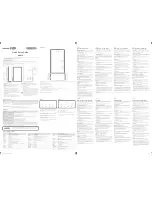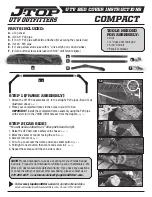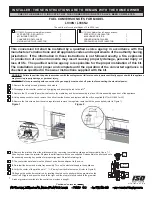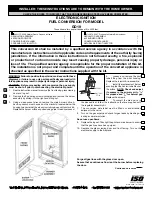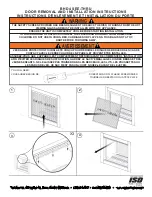
Proximity Safeguarding for Automatic Shuttle Conveyors
PELLERIN MILNOR CORPORATION
A common method of proximity safeguarding is safety fencing with interlocked gates that disable
the shuttle when a gate is opened. When a shuttle is disabled, this will eventually cause other
machines in the system to
hold
(wait for action from another machine), but it will not necessarily
cause them to immediately stop moving. In the case of a tunnel system, the press or centrifugal
extractor can pose additional hazards to personnel in proximity to the equipment.
Hence, the
safeguards must also disable any presses or extractors.
Tunnels and dryers do not pose a
significant hazard to personnel merely because they are in proximity to the equipment, and need
not be automatically disabled.
WARNING 1 : Multiple Hazards
—Proximity safeguarding provides only partial protection
and only against injury resulting from entering the shuttle path. It is not a substitute for proper
lockout/tagout procedures and good safety practices.
• Always lockout/tagout any individual machine (or follow the published maintenance
procedures) when performing maintenance or clearing a fault on that machine.
• Ensure that all personnel understand the safeguards and do not attempt to defeat them.
• Inspect safeguards weekly to ensure that they are not mechanically or electrically
circumvented.
4.
How Milnor Accommodates Proximity Safeguarding
Milnor provides connection points on shuttles, presses and centrifugal extractors for interfacing
with devices such as gate interlock switches. These connection points are tagged for easy
identification. When Milnor provides equipment layout drawings for an automated laundering
system, it indicates on the drawing, the perimeter of the shuttle movement area that must be
guarded. The following hazard statement is displayed on connection point tags as well as
equipment layout drawings prepared by Milnor:
WARNING 2 : Strike, Crush, Sever, and Entrapment Hazards
—Serious bodily injury
or death can result to personnel in proximity to machinery/systems that traverse, elevate, extend,
pivot, and/or tilt. The following mandatory minimum safety requirements must be installed with
the machinery system (local codes may require additional precautions):
• Safety fence enclosing machine movement areas,
• Lockable electrical interlocks on all gates, properly interfaced as shown on machine
schematics, to disable machine movement when any gate is opened,
• Signs to alert personnel to these hazards, placed prominently around the fenced area.
Although the objectives of proximity safeguarding are the same anywhere, design requirements
vary with local codes (which occasionally change) and with the plant layout. For this reason,
Milnor does not provide detailed designs or materials for proximity safeguarding. If the necessary
expertise does not exist within the owner/user's organization, consult appropriate sources such as
local engineers or architects specializing in industrial facility design.
5.
Examples of Safety Fencing With Interlocked Gates
Fencing with interlocked gates like that depicted in
Figure 1
and
Figure 2
, may be used to meet
the proximity safeguarding requirement. Should the owner/user choose this method, the following
information may be useful. However,
this information may not satisfy current or local code
requirements. The owner/user must determine its suitability for his particular facility.
8
Содержание COLFM 111
Страница 2: ......
Страница 4: ......
Страница 5: ...Safety Information 1 1 ...
Страница 22: ......
Страница 23: ...Installation 2 19 ...
Страница 48: ......
Страница 49: ...Service and Maintenance 3 45 ...
Страница 88: ......
Страница 89: ...Dimensional Drawings 4 85 ...
Страница 90: ......
Страница 91: ...87 ...
Страница 92: ...88 ...
Страница 93: ...89 ...
Страница 94: ......
Страница 95: ...91 ...
Страница 96: ......
Страница 97: ...93 ...
Страница 98: ...94 ...
Страница 99: ...95 ...
Страница 100: ...96 ...
Страница 101: ...97 ...
Страница 102: ...98 ...
Страница 103: ...99 ...
Страница 104: ...100 ...






























